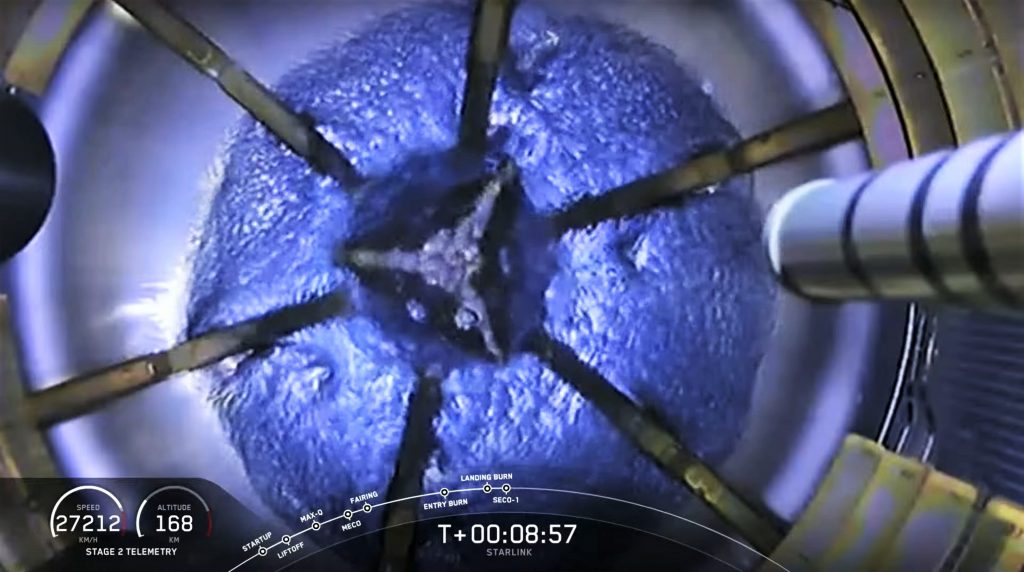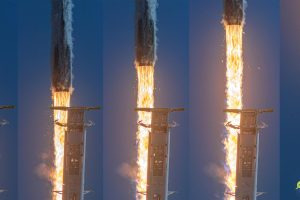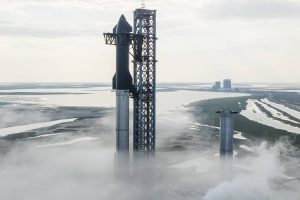A SpaceX Falcon Heavy rocket has rolled out to Kennedy Space Center Pad 39A for its first launch (and dual booster landing) in almost three and a half years.
Missing its payload fairing and the US Space Force’s classified USSF-44 payload, SpaceX’s fourth Falcon Heavy rocket rolled out to Pad 39A for the first time on October 25th. On the 27th, the rocket successfully fired up all 27 of its first-stage Merlin 1D engines, reasserting its status as the most powerful operational rocket in the world. On October 30th, SpaceX finally brought Falcon Heavy horizontal and rolled the rocket back to Pad 39A’s integration hangar, where the USSF-44 mission’s several payloads – safely stowed inside a payload fairing – were installed on the rocket.
24 hours later, Falcon Heavy – now fully assembled – departed the hangar again. According to the US Space Systems Command (SSC), despite the exceptionally late rollout on October 31st, SpaceX is on track to launch Falcon Heavy no earlier than (NET) 9:41 am EDT (13:41 UTC) on Tuesday, November 1st.
As previously discussed on Teslarati, USSF-44 will be SpaceX’s first attempt at a direct launch to a geostationary orbit (GEO) some ~36,000 kilometers (~22,400 mi) above Earth’s surface, where spacecraft can hover motionless over their region of choice. To accomplish that feat, Falcon Heavy’s upper stage will need to survive a roughly six-hour coast in the harsh vacuum of space, likely making USSF-44 one of the most challenging missions SpaceX has ever attempted.
“Long orbital coasts of six or so hours are necessary for some of the most challenging launch trajectories. Direct-to-geostationary launches are the most common mission requiring long coast capabilities and are often demanded by the US military. When Falcon’s upper stage gets too cold, its kerosene fuel – which freezes at a much higher temperature than Falcon’s liquid oxygen oxidizer – becomes viscous and slush-like before it becomes solid. If ingested in Falcon’s Merlin Vacuum engine, slushy fuel would likely prevent ignition or outright destroy it.“
Teslarati.com – October 10th, 2022
Simultaneously, while worrying about kerosene fuel getting too cold, SpaceX must also ensure that the Falcon upper stage’s cryogenic liquid oxygen (LOx) oxidizer doesn’t boil into gas. If too much LOx warms up and has to be vented out as it turns to gas, the Falcon upper stage could find itself without enough propellant to complete its geostationary orbit circularization burn.
LOx is far less stable, which makes it a bit ironic that the upper stage’s fuel tank bares the only visible sign of the tweaks needed to survive a long coast. To keep the RP1 fuel warmer in orbit, SpaceX has added a layer of grey paint to the RP1 tank, increasing the amount of heat that can be absorbed through unfiltered sunlight. The uninsulated LOx tank, meanwhile, benefits from the unintuitive fact that a cryogenic liquid can stay liquid for a surprisingly long time because some of it warms up and boils off as a gas, sacrificing a small quantity to keep the rest cool.

According to the US Space Force, USSF-44 will carry several “various payloads” attached to the second Northrop Grumman “Long Duration Propulsive EELV (Evolved Expendable Launch Vehicle) Secondary Payload Adapter” or LDPE-2 – essentially a long-duration kick stage. Cataloged on EverydayAstronaut.com, the payloads include two Lockheed Martin LINUSS-A cubesats that will demonstrate a handful of new technologies and capabilities; TETRA-1, a microsat built by Millenium Space Systems to test on-orbit maneuverability; and a communications satellite prototype called USUVL. Spaceflight Now reports that LPDE-2 will carry three hosted payloads and deploy three satellites.
Finally, a recent Space Systems Command press release [PDF] mentioned a mysterious “Shepard demonstration” – likely a second propulsive kick stage – for the first time, which almost nothing is known about. It’s unclear if there is a main classified satellite the mission revolves around or if USSF-44 is simply a collection of various rideshare payloads headed to GEO.
Regardless, to launch them directly into geostationary orbit, USSF-44 will mark the first time SpaceX intentionally expends a Falcon Heavy booster. Over three previous launches, SpaceX only managed to land a Falcon Heavy center core once, but that core then tipped over and was destroyed at sea. Two other attempts resulted in failed landings. USSF-44 will continue that trend. Falcon Heavy’s twin side boosters will attempt to continue a more positive trend of simultaneous side-by-side landings and boost back to Florida to touch down at SpaceX’s LZ-1 and LZ-2 pads. SpaceX will also attempt to recover both halves of Falcon Heavy’s payload fairing a record-breaking 1410 kilometers (876 mi) off the Florida coast.
SpaceX says weather is 90% favorable for Falcon Heavy’s November 1st launch attempt. Stay tuned for a link to the company’s official webcast.





